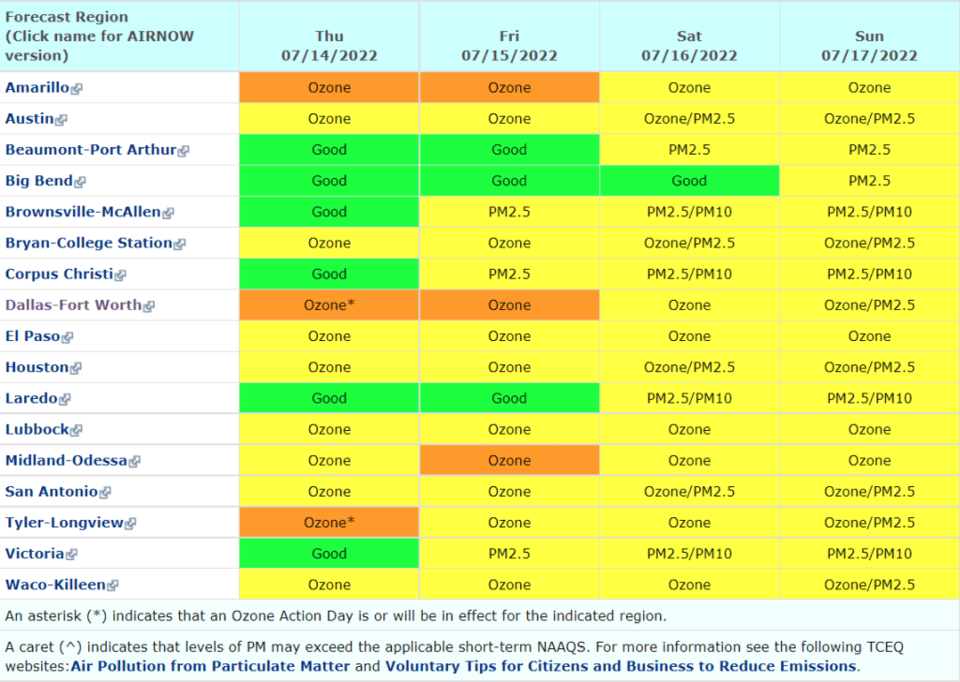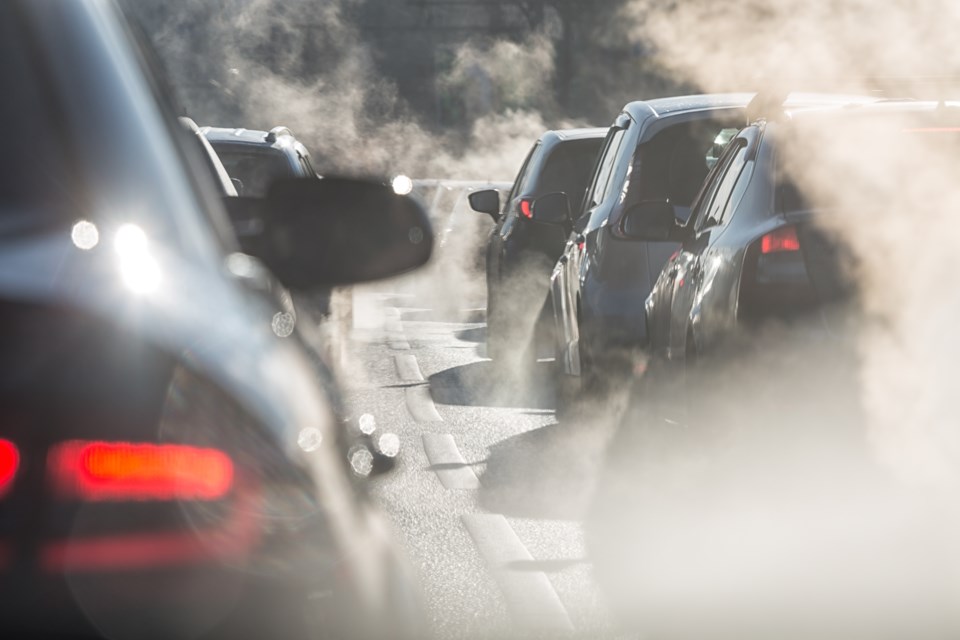As covered previously by Local Profile, the heat wave Texans have been enduring for the past few weeks has multiple side effects. One is the vehicle and industrial emissions reacting to the record high temperatures, spiking ozone concentrations in the air. This combination could turn dangerous, and for some vulnerable groups, even deadly.
Data from the Texas Commission on Environmental Quality (TCEQ) shows that we are facing the highest concentration of ozone in a decade.
According to the Environmental Protection Agency, ground-level ozone, the main smog component, is a harmful air pollutant that can cause the muscle in our lungs' airways to constrict, resulting in shortness of breath. Consequently, people with preexisting conditions like asthma may notice an aggravation of their symptoms.
But healthy people with no record of lung disease are not off the hook. “We know that when organ systems in the body are under stress from extreme heat, they’re extremely vulnerable to other assaults from air pollution,” said Vijay Limaye, an epidemiologist and senior scientist at the Natural Resources Defense Council, to Texas Tribune. He explained that ozone can contribute to the development of asthma and other respiratory conditions.
Combined with heat, smog gets worse. Sunlight and high temperatures cause volatile organic compounds and nitrogen oxides to react faster. “We’re beginning to detect this climate change signature on ozone pollution in which we have higher summertime ozone levels because it’s hotter outside,” said Limaye.
Erika Garcia, assistant professor of population and health sciences at the University of Southern California and lead researcher, agrees. “This is an important co-exposure that’s likely going to increase in frequency with the changing climate,” Garcia told Scientific American, “and it’s important to implement different public health interventions and policies to help protect people and save lives.”

According to the TCEQ, Collin County and the DFW area levels of ozone at ground level have recently increased, reaching Unhealthy for Sensitive Groups levels according to the Air Quality Index. In these conditions, local authorities might be forced to declare an Ozone Action Day, advising higher-risk populations to reduce their outdoor activities.
Levels of ozone fluctuate at different times of the day, so check Air Now’s current air quality to find when is the best time to be active outdoors.


![Top 5 Reads Of The Week [June 23-27]](https://www.vmcdn.ca/f/files/localprofile/images/events/downtown-celina-city-of-celina.jpg;w=120;h=80;mode=crop)

